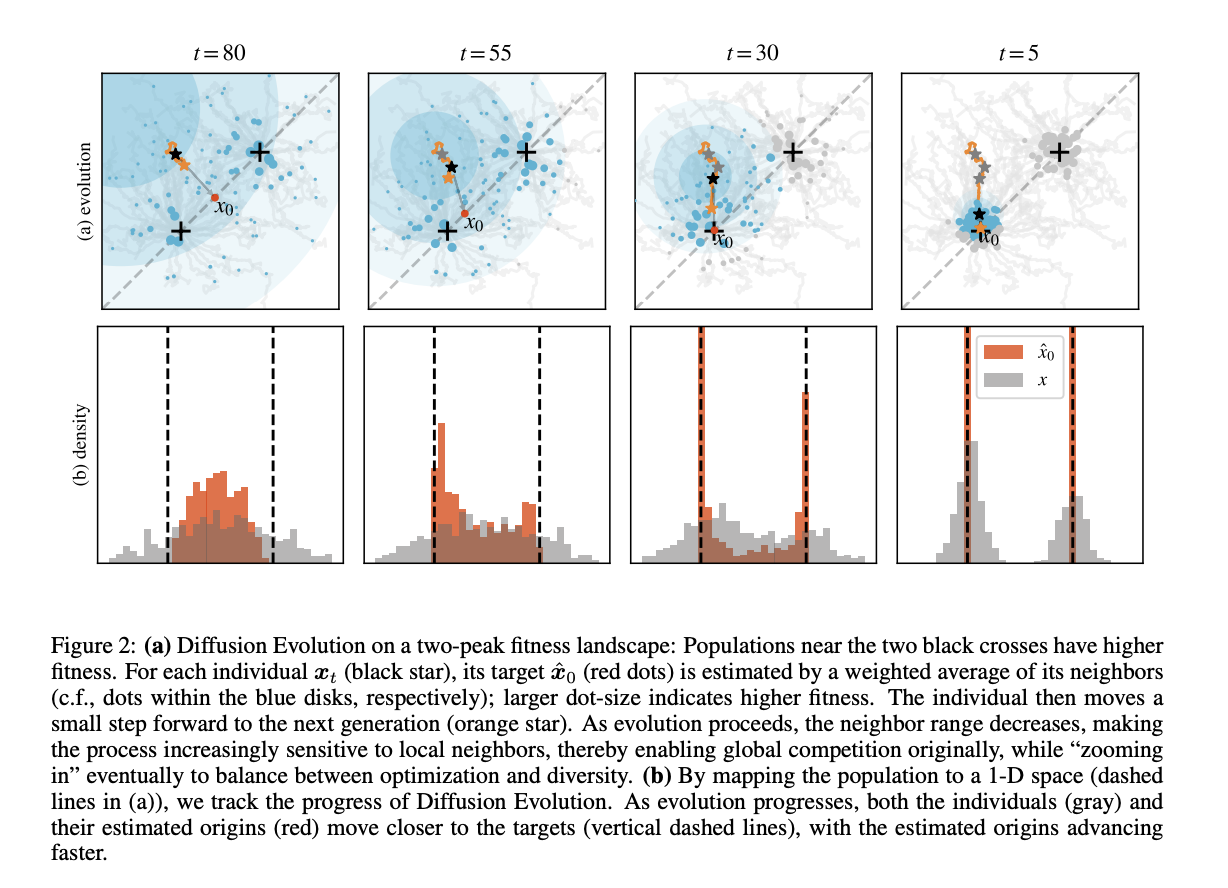
Revolutionizing AI with Diffusion Evolution
Artificial intelligence (AI) is evolving by borrowing ideas from biology, especially the process of evolution. One approach is using evolutionary algorithms, which are inspired by natural selection. These algorithms help in finding the best solutions to complex problems by refining possible solutions over time. Another method, diffusion models, improves data clarity step by step, turning noisy information into clear and structured outputs. By combining these two techniques, we can create better solutions for challenging tasks.
Challenges of Traditional Evolutionary Algorithms
One major issue with traditional evolutionary algorithms is their tendency to settle on one solution too quickly, especially in complex scenarios. For example, methods like Covariance Matrix Adaptation Evolution Strategy (CMA-ES) often get stuck in local optima, missing out on other high-quality solutions. This calls for more advanced algorithms that can explore a variety of solutions effectively.
Introducing Diffusion Evolution
Researchers from various prestigious institutions have created a new method called Diffusion Evolution. This innovative algorithm combines evolutionary principles with diffusion models, treating evolution as a way to refine solutions. Their approach is more efficient because it reduces the complexity of problem-solving by mapping high-dimensional spaces into simpler forms. This allows for a more effective search for diverse solutions.
Key Benefits of Diffusion Evolution
The Diffusion Evolution method is significant because:
- Improved efficiency: It searches for solutions faster by reducing the complexity of the problem.
- Diverse solutions: It can find multiple optimal solutions in one search, which is crucial for complex problems.
- Robustness: The method adapts well to various challenges, avoiding common pitfalls of traditional algorithms.
Experiments and Results
In tests against other well-known algorithms like CMA-ES, Diffusion Evolution excelled on various benchmark functions. For instance, it was able to find diverse solutions with high fitness scores on the Himmelblau and Rastrigin functions. Furthermore, it required fewer steps to reach optimal solutions, showcasing its efficiency in high-dimensional spaces.
Real-World Applications
Diffusion Evolution also proved effective in reinforcement learning tasks. In a cart-pole system, where the objective is to keep the pole balanced, the algorithm demonstrated consistent success. This highlights its potential use in real-world scenarios where complex decision-making is required.
Conclusion
The Diffusion Evolution algorithm represents a significant step forward in evolutionary computation. By merging the strengths of diffusion models with evolutionary principles, it enhances problem-solving abilities in complex optimization tasks while being computationally efficient. The success in various tests and practical applications suggests it has the potential to transform the field of AI.
For more in-depth insights, check out the Paper. Follow us on Twitter, join our Telegram Channel, and connect with our LinkedIn Group. If you appreciate our work, subscribe to our newsletter and join our 50k+ ML SubReddit.
Upcoming Event
Oct 17, 2023 – RetrieveX: The GenAI Data Retrieval Conference
To stay competitive and embrace AI in your business, consider practical steps such as:
- Identify Automation Opportunities: Find key customer interactions that could benefit from AI.
- Define KPIs: Ensure measurable impacts on business outcomes from your AI initiatives.
- Select an AI Solution: Choose tools that meet your specific needs and allow customization.
- Implement Gradually: Start with a pilot program, gather data, and expand carefully.
For AI KPI management advice, connect with us at hello@itinai.com. Stay updated on AI insights through our Telegram and Twitter.


























